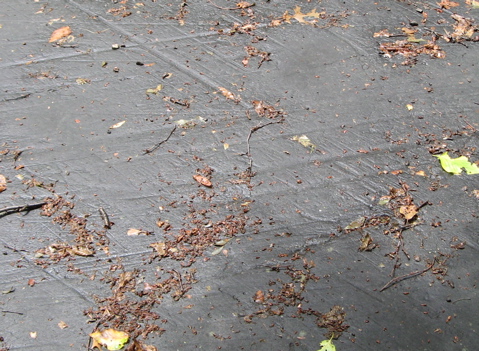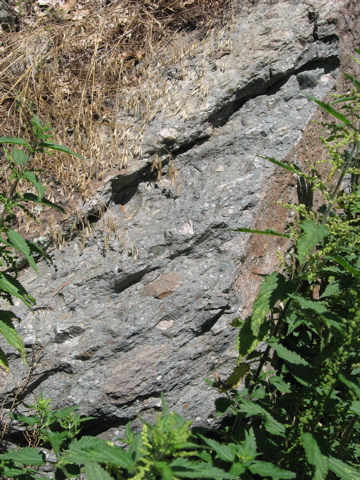Arnold Arboretum
The Arnold Arboretum shows lots of evidence of glaciation - the process by which glaciers alter the landscape. What's interesting about this location is that you can see evicence of relatively recent glaciers (~22,000 years ago) and very ancient glaciers (~600 million years ago).
The Arboretum has several hills, of which Peters Hill (on the south side of the park) is the largest. These hills are drumlins. A drumlin is a hill composed of a pile of sand, rocks, gravel, boulders, etc. that have were left behind as glaciers retreated over 16,000 years ago.
Not too far away, at the Chestnut Hill Mall (behind Bloomingdale's), you can see more evidence of the glaciers advanced. They left behind clear scratches in the rock as they slowly advanced. We think of glaciers as having moved south as they covered Massachusetts, and in general, they do. You'll notice that the surface has two sets of scratches almost perpendicular to each other. Both of these sets of scratches were caused by glaciers as they advanced South. (We call this "glacial scarring".) It is uncommon to find two sets of scratches, since the later glacial event generally wipes out the earlier one.
But wait! How is it possible for two sets of glacial scratches (one earlier than the other) to both be oriented south, if they are perpendicular?? What could have happened here? Hint: think about the difference between the entire ice sheet moving and what individual, much smaller, parts of it might have done.
Can you tell which set of scratches is older? What is your evidence?

Not all till comes from large continent-covering glaciers (such as those that occured during the Ice Age). On the tops of many mountains glaciers can be found, and they can produce the same effects as larger glaciers.
Look closely at the pictures of the rock below. These are formed in a similar way to the Roxbury Conglomerate, in that bits of rock, sand and clay were deposited at the bottom of a stream or river bed - over time these became cemented toegether to form a hard rock.
However, the bits of rock that make up the Conglomerate found in the Arboretum may have been formed differently - these bits of rock were probably eroded by glaciers, rather than water and wind. This type of conglomerate is called a tillite, and the specific rock found in the Arboretum is known as Squantum Tillite.
One telltale feature of the tillite is the fact that the bits of rock found in the conglomerate tend to be more jagged, as compared to the rounded stones found in the Roxbury Conglomerate.
<pictures of Tillite and Conglomerate>
Some scientists believe that the tillite was formed by glaciers, yet the Boston area was near the equator when the tillite was formed. What does that tell you about the environment in which the tillite was formed?

